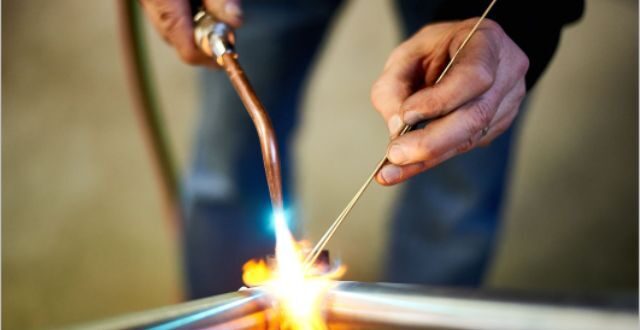The Fundamentals of Brazing
Brazing is a metal-joining process that uses heat and filler material to bond two or more pieces of metal together. Unlike welding, brazing does not require melting the base metals. Instead, it involves melting only the filler material to join the workpieces. The filler material used in brazing is typically an alloy, such as bronze or brass.
The filler material is melted at a temperature that is higher than the melting point of the base metals but lower than that of their alloys. This process creates a strong bond between the two workpieces, which can withstand high temperatures and pressures.
Brazing Techniques
There are several techniques used for brazing, depending on the application and components. These include:
- Torch Brazing – This is a manual process in which a torch is used to heat the filler material until it melts and flows into the joint.
- Furnace Brazing – This method uses an automated furnace to heat the filler material and join the workpieces.
- Dip Brazing – This technique involves immersing the workpieces in a molten bath of metal alloy.
- Diffusion Brazing – This method relies on diffusion between two materials that are heated at high temperatures, enabling them to bond together by forming intermetallic compounds.
Brazing Materials
The materials used in brazing typically include flux, filler metal, and base metals. Flux is a chemical agent applied to the surfaces of the workpieces that helps clean them before the brazing process begins. It also helps promote surface wetting between the metals and assists with heat transfer.
The filler metal is an alloy with a lower melting point than the base metals being joined. Common filler metals used in brazing include brass, bronze, silver, aluminum, and nickel alloys.
Finally, the base metals are those that are joined together by the brazing process. They could be any two metals that can be joined together through the use of heat and filler material.
Process Steps
The brazing process involves several steps, including cleaning, preheating, brazing, and post-brazing activities. Cleaning is done to remove the oxides present on the surfaces of the workpieces before brazing. Preheating helps to reduce thermal shock and is done by heating the base metals that are to be joined.
The actual brazing process involves melting the filler metal using a torch or furnace while controlling the temperature of the heat source and ensuring that it does not exceed the fusion point of the filler material. Once the filler metal is melted, it flows into the joint and cools down to form a strong bond between the two workpieces.
Finally, after brazing, post-brazing activities such as cleaning and inspection may be carried out. These help to ensure that the finished product meets quality standards.
Common Challenges
Brazing can be a challenging process due to factors such as joint design, surface finish, and temperature control. Poor joint design can lead to inadequate wetting of the base metals, resulting in poor bonding. Similarly, if the surface finishes of the workpieces are not proper or if there is any contamination on them, then it can lead to inadequate bonding.
Temperature control is also an important factor in brazing and can be difficult to achieve due to a variety of factors such as ambient temperature, the size of the workpieces, and the nature of the joint being used. All these factors can affect the flow characteristics of the filler material and can result in poor bonding.
Applications of Brazing
Brazing is widely used in various industries due to its unique advantages over other joining processes. It can be used for a wide range of applications such as joining pipes and ducts, soldering electrical components, repairing worn or broken parts, attaching fixtures to metal surfaces, etc. Brazing is also often used in automotive, aerospace, and electronic industries due to its strength and reliability.
Safety Considerations
Brazing involves the use of heat sources at high temperatures, so it is important to follow safety precautions while performing brazing operations. These include wearing proper protective gear such as fire-resistant clothing, gloves, goggles, and face shields. It is also important to ensure a proper ventilation system in the work area as brazing produces fumes that can be hazardous to health.
Advancements in Brazing Technology
Advances in technology have made brazing easier and more efficient than before. Automated brazing systems can provide consistent and repeatable results, while 3D printing can be used to create complex joint designs. In addition, virtual reality software allows users to simulate brazing operations in a safe environment before carrying them out in real life. These advancements have improved the process of brazing and made it more efficient and cost-effective.
Now that you know the fundamentals of brazing, you can decide if this joining process is right for your application. If it is, then make sure to follow the safety precautions and keep up with advancements in technology to get the best results.
 khamush.com Lifestyle | Motivation | Poems
khamush.com Lifestyle | Motivation | Poems



